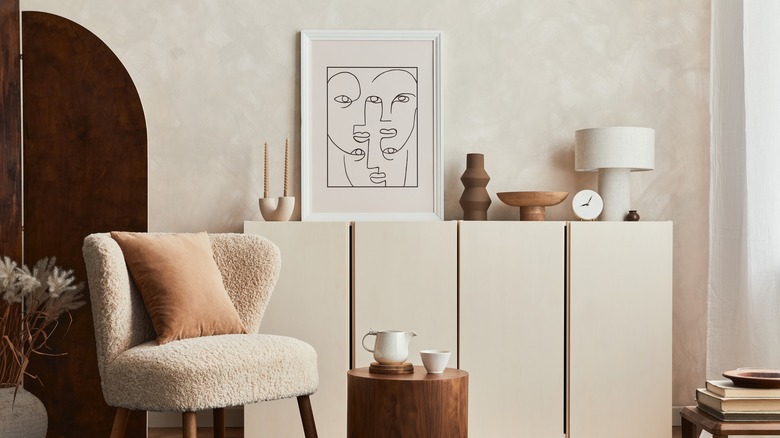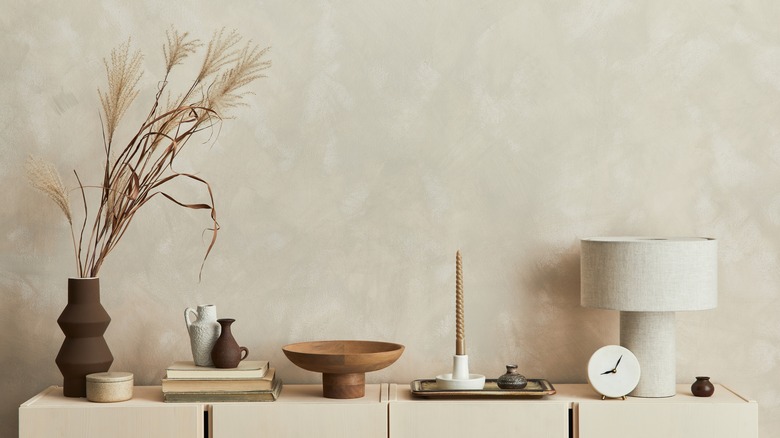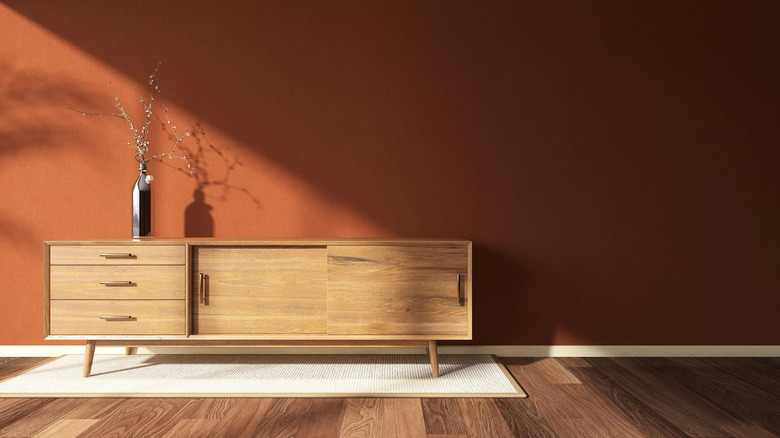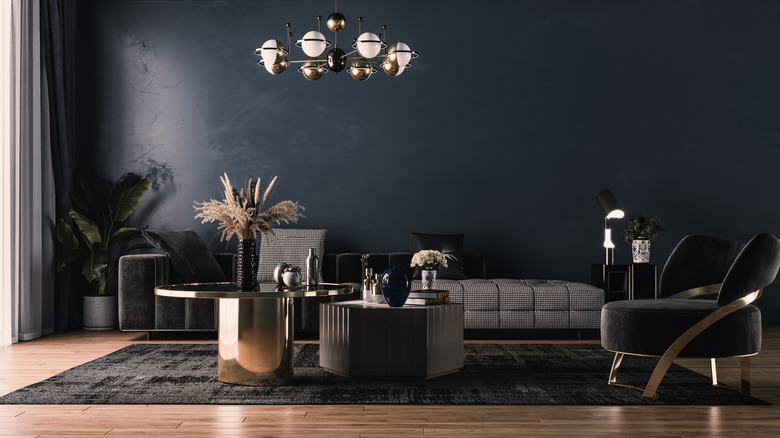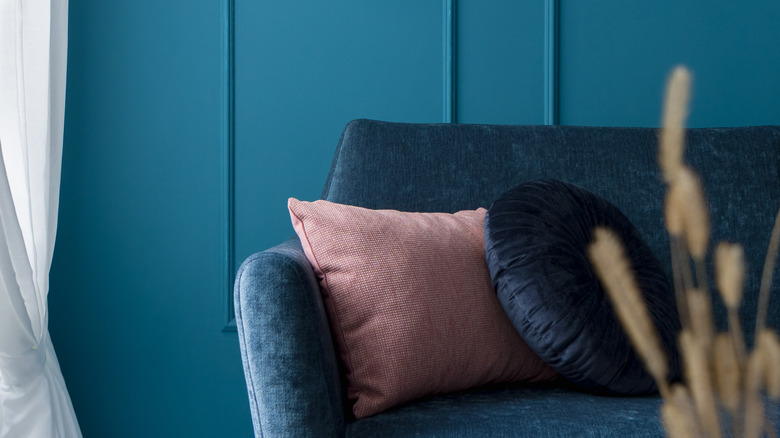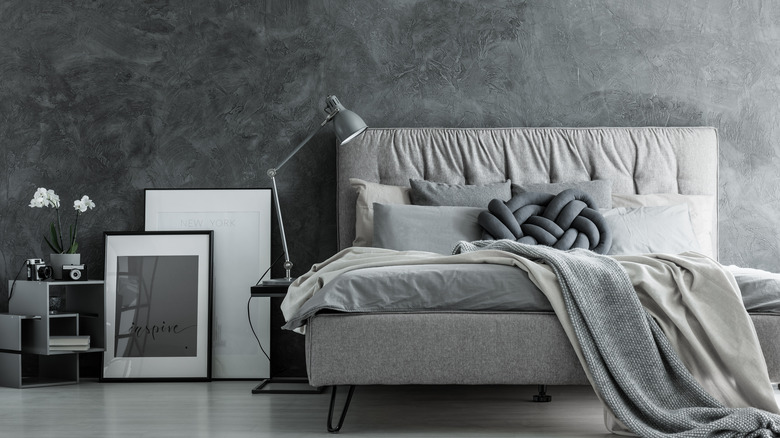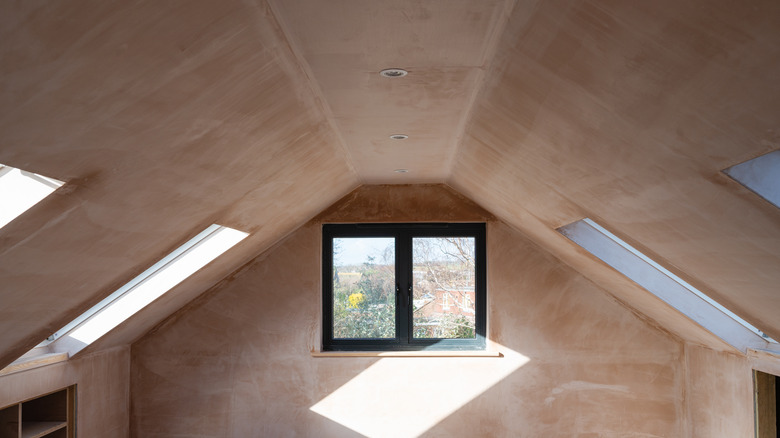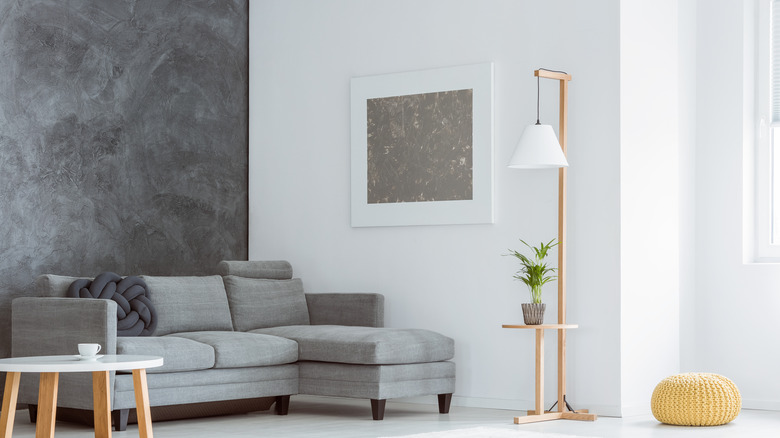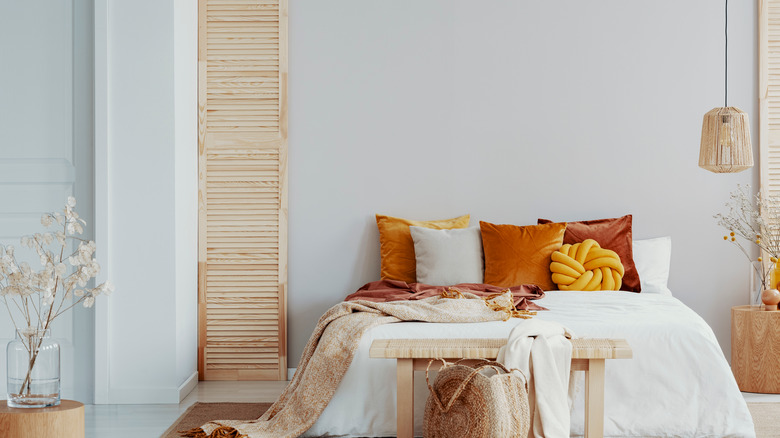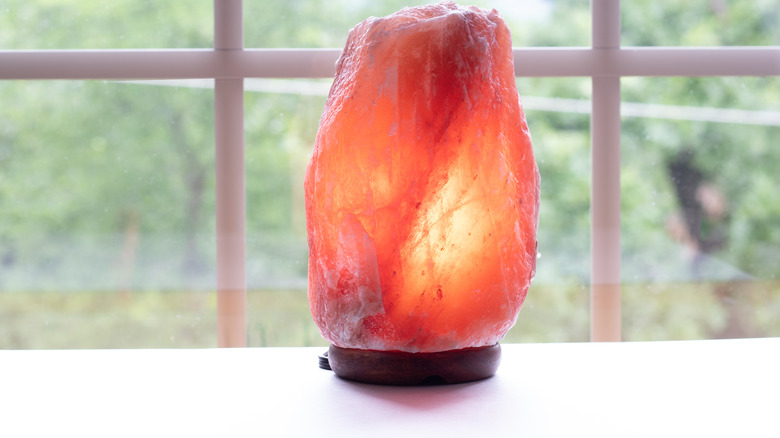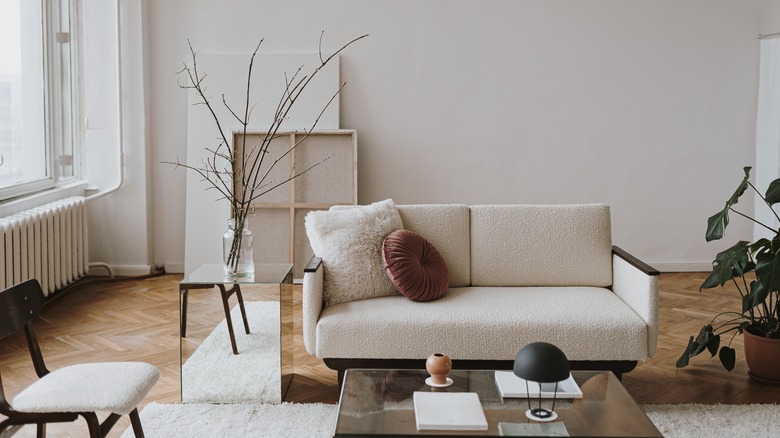How To Use Colors To Warm Up A Room
There can be a number of factors influencing the feel of different rooms in your home. Whether it's the lighting conditions in the space or the size and the scale of its contents, all inform whether a room feels warm and inviting or cold and impersonal. Color, one of the easiest elements to transform a space, is obviously a guiding factor in warming up any room. With many popular design trends trending toward an abundance of neutrals, however, not all rooms find themselves washed in the kinds of colors that instantly warm up a space.
However, whatever the design scheme you are going for or the chosen colors, there are a number of shades and colored elements in a room that can be maximized to bring in necessary warmth, even with shades like blue that are not traditionally considered warm colors (via Linda Holt Creative). This not only includes the kinds of colors you use in a room, but how you manipulate light, materials, textures, and paint to create a cozy feel.
1. Warm neutrals
Warmer neutrals are an obvious choice for creating a warm and inviting room that fits a number of popular design styles. Choose a few different intensities of your favorite neutrals like taupe, caramel, chocolate, and sand, and mix them liberally. The variation between lighter shades and darker shades will add immediate interest and keep the room from looking too uniform.
2. Earth tones
A bold and bright way to add warm colors to your space is to choose earth tones like deep brick reddish browns and sunset shades like light orange or peach. These colors work especially well in rooms that lack a lot of natural light or have northern exposures, which can sometimes feel shadowy or cold when sporting other neutrals.
3. Black
While painting a room all in black might seem like the opposite of warming up a space, sometimes the effect can be not only stunning, but quite cozy, particularly when paired with furniture in rich fabrics and warm-toned wood floors. Black is a color that swallows light but can also make a room feel more intimate whatever its size.
4. Deep shades
Like black, deep shades and jewel tones can actually bring the warmth of a room up a couple of notches. From deep teal to dark plum, these shades gain further depth when paired with other similar dramatic shades or when layered to create a delightful monochrome effect. They are especially adept at bringing in the walls of an expansive room to make large spaces seem more intimate.
5. Monochromatic
While some colors are usually considered cooler, like gray, they can also be warmed up by using a monochromatic effect. Here, different shades of dove gray from light to dark and with varying undertones immediately grant depth and warmth to what is a pretty basic color scheme. The texture of the wall's painting technique, the rich knitted blankets, the fabric headboard, and metallic accents like the lamp offer even more visual interest to a room composed entirely of one key color.
6. Paint the ceiling
A great solution to rooms that seem impersonal, vast, and generic is to extend the paint color to the ceiling, which immediately makes the space cozier, particularly when it's a warm shade like this terracotta. A painted ceiling can also, at the same time, grant an optical illusion that makes small spaces like closets or hallways seem larger by not cutting off the eye as it ascends upward.
7. Paint an accent wall
Another great way to manipulate the eye with the use of any color is to create zones and areas in a room through the application of paint. This may be as simple as painting an accent wall in an otherwise white or neutral room or using stenciled accents to highlight certain areas of the room or pieces of furniture like the sofa. You can also paint architectural features of the room like the fireplace surround or built-in shelves with a complementary or contrasting color to create new focal points.
8. Warm wood tones
While paint and textile colors are important, natural materials like stone and wood also play an important role in the feel of a room. Here, a neutral bedroom with vibrant orange and yellow accents is further warmed up by the wooden shutters against the wall and the tables in a light warm wood. The rattan lamp, in a similar shade, finishes the room, making it cozy and warm even while the walls remain basic white.
9. Colored lighting
Colored and tinted light is another element that can take advantage of color to manipulate the tone of any room. Choose shades and fixtures in warm colors like amber, orange, yellow, and brown to immediately cast a warm glow. For any lamp or fixture, you can also use warmer tinted bulbs vs. harsher LEDs or fluorescents, which often give a cooler wash of light.
10. Texture
Whatever the colors of your walls or furniture, a rich sense of warmth can be accomplished through the strategic use of texture. Here, a rather minimalist room remains simple but achieves a layered effect. The herringbone wood floor and soft cream walls immediately set a warm tone throughout the entire space.
